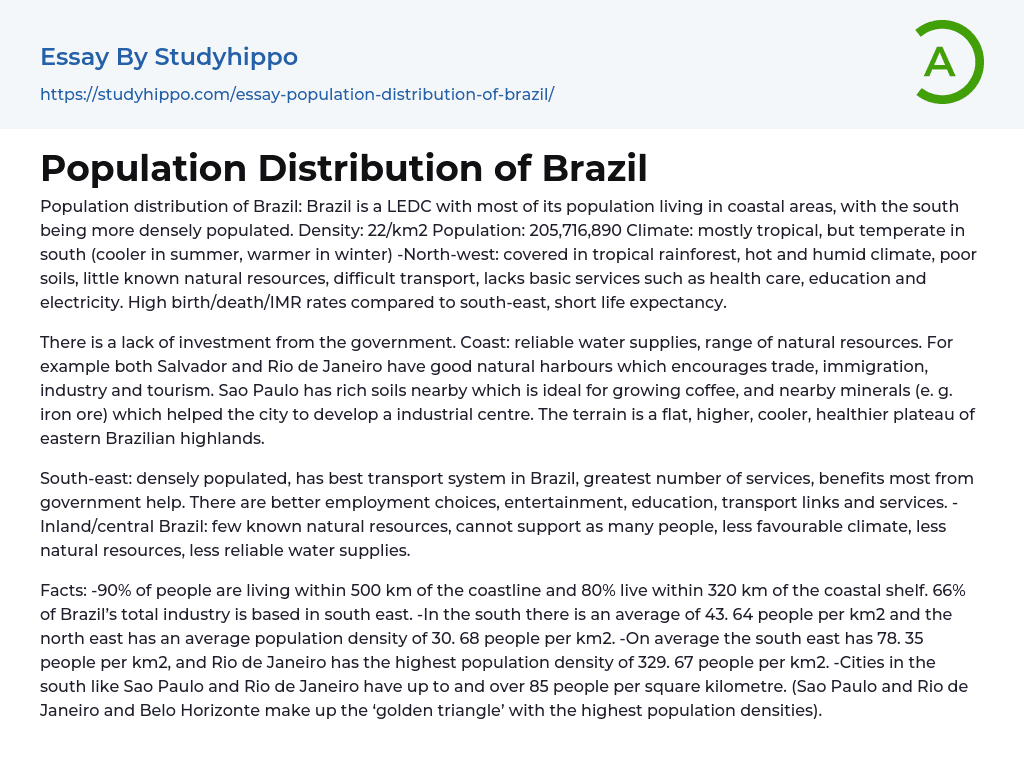Population distribution of Brazil: Brazil is a LEDC with most of its population living in coastal areas, with the south being more densely populated. Density: 22/km2 Population: 205,716,890 Climate: mostly tropical, but temperate in south (cooler in summer, warmer in winter) -North-west: covered in tropical rainforest, hot and humid climate, poor soils, little known natural resources, difficult transport, lacks basic services such as health care, education and electricity. High birth/death/IMR rates compared to south-east, short life expectancy.
There is a lack of investment from the government. Coast: reliable water supplies, range of natural resources. For example both Salvador and Rio de Janeiro have good natural harbours which encourages trade, immigration, industry and tourism. Sao Paulo has rich soils nearby which is ideal for growing coffee, and nearby minerals (e. g
.... iron ore) which helped the city to develop a industrial centre. The terrain is a flat, higher, cooler, healthier plateau of eastern Brazilian highlands.
South-east: densely populated, has best transport system in Brazil, greatest number of services, benefits most from government help. There are better employment choices, entertainment, education, transport links and services. -Inland/central Brazil: few known natural resources, cannot support as many people, less favourable climate, less natural resources, less reliable water supplies.
Facts: -90% of people are living within 500 km of the coastline and 80% live within 320 km of the coastal shelf. 66% of Brazil’s total industry is based in south east. -In the south there is an average of 43. 64 people per km2 and the north east has an average population density of 30. 68 people per km2. -On average the south east ha
78. 35 people per km2, and Rio de Janeiro has the highest population density of 329. 67 people per km2. -Cities in the south like Sao Paulo and Rio de Janeiro have up to and over 85 people per square kilometre. (Sao Paulo and Rio de Janeiro and Belo Horizonte make up the ‘golden triangle’ with the highest population densities).
- Alaska essays
- Boston essays
- Brazil essays
- California essays
- Canada essays
- Chicago essays
- Costa Rica essays
- Florida essays
- Hawaii essays
- Latin America essays
- Los Angeles essays
- Mexico essays
- Slavery In America essays
- Usa essays
- Virginia essays
- Washington essays
- Atmosphere essays
- Biodiversity essays
- Coral Reef essays
- Desert essays
- Earth essays
- Ecosystem essays
- Forest essays
- Lake essays
- Natural Environment essays
- Ocean essays
- Oxygen essays
- Rainbow essays
- Sea essays
- Soil essays
- Volcano essays
- Water essays
- Wind essays
- Cultural Assimilation essays
- Demography essays
- Ethnographic essays
- Population essays
- Population Growth essays




